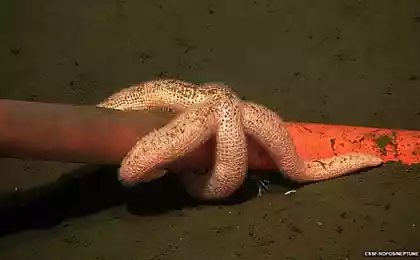154
High-tech plants are replacing electronic sensors
In the new study, researchers implanted tiny structures called “carbon nanotubes” into energy-producing plant organelles, boosting their ability to capture light by 30 percent. With the help of other similar structures, the researchers gave plants sensitivity to nitric oxide, a substance that pollutes the atmosphere.
“Plants can be used very effectively as a technology platform,” says study author Michael Strano, a chemist at the Massachusetts Institute of Technology. They recover independently, demonstrate environmental sustainability, survive in harsh conditions, and also have their own energy source and water distribution mechanism.
Strano and his colleagues are exploring a new scientific field called plant nanobionics. “Nano” refers to the scale of materials on the order of one billionth of a meter, and the concept of “bionics” refers to the use of nature as a means to inspire engineers.
Plants with superpowers
Initially, the researchers worked to create self-healing solar cells based on plant cells. They are able to convert light into chemical energy in the form of sugars and other compounds in a process known as photosynthesis. It uses chloroplasts, tiny power stations inside plant cells.
Scientists planned to isolate chloroplasts from plants and make them more efficient. But in the case of such a separation, they begin to disintegrate after a few hours due to damage by light and oxygen.
To protect the chloroplasts from damage, the researchers placed tiny particles of antioxidants, or nanoparticles, in them that collect oxygen radicals and other highly active molecules. To deliver the nanoparticles, the researchers wrapped them in a saturated molecule, allowing them to penetrate the chloroplast fat membrane. As a result of the action of nanoparticles, the number of damaged molecules decreased dramatically.
The researchers then wrapped tiny cylinders called "carbon nanotubes" of negatively charged DNA and placed them in chloroplasts. The nanotubes worked as artificial antennas, allowing the plant to capture more light than usual.
The level of photosynthesis activity in chloroplasts with nanotubes was almost 50 times higher than in isolated organelles. When the scientists placed both antioxidant particles and carbon nanotubes in them, the cells continued to function successfully and for a long time outside the plants.
Scientists have also improved the energy efficiency of living plants. They introduced nanoparticles into a small flowering plant called arabidopsis, causing photosynthesis levels to rise by 30 percent. However, the effect of this mechanism on sugar production remains a mystery.
Pollution sensors
Strano and his colleagues have found a way to turn the arabidopsis plant into a chemical contamination sensor. They used carbon nanotubes to detect the nitric oxide contaminant produced by combustion.
Scientists have previously developed carbon nanotubes that detect TNT explosives and the nerve gas sarin, and based on these advances, they can turn plants into sensors that detect the presence of these toxic substances in low concentrations. Nanobionic plants can also be used to track the presence of pesticides, fungal infections, or toxins of bacterial origin. In addition, a group of researchers is currently working on the introduction of electronic materials into plants.
Source: facepla.net
A dangerous combination of drugs and food
The different behavior of men and women in stressful situations



















